Egg-Free, Vegan Homemade Black Pepper Pasta
4.5
(52)
Your folders
Your folders
Prep Time: 30 minutes
Cook Time: 5 minutes
Total: 1 hours, 5 minutes
Servings: 4
Author : Eva
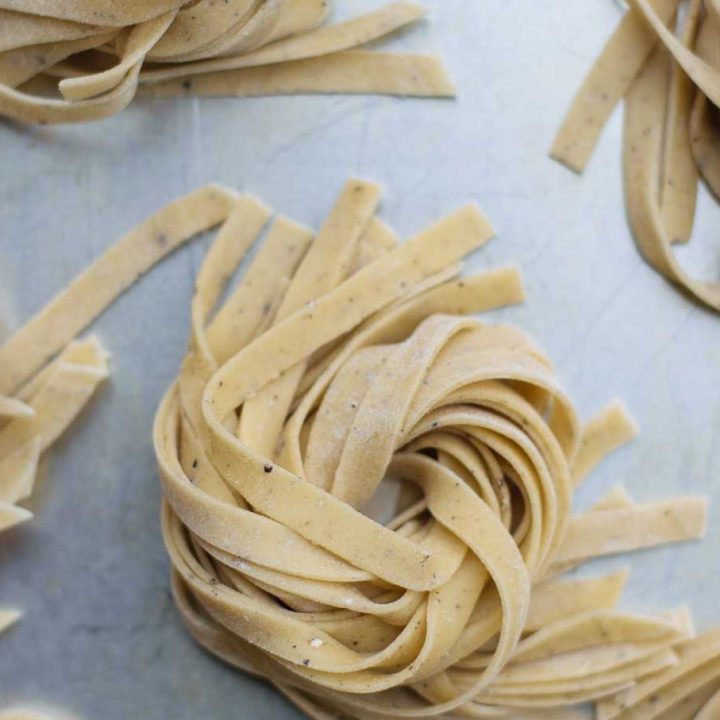
Ingredients
Export 3 ingredients for grocery delivery
Instructions
Step 1
Add flour, salt, and black pepper into the bowl of a food processor and pulse to combine. Add the oil and aquafaba and turn the food processor on and run until the mixture forms into a ball. In my food processor this takes around 90 seconds. Keep running another 30 seconds. Turn the dough out onto a clean counter and knead for 1 minute to check the final texture of the dough. You want a firm, but still pliable dough that is not sticky or tacky to the touch.
Step 2
Alternatively, you can knead the dough by hand: mix the flour, salt, and black pepper together. Add the oil and aquafaba and mix with a wooden spoon to form a shaggy, but rather dry mixture. Turn the mixture onto a clean counter and switch to your hands. Knead the dough until it forms a cohesive ball. If it is very dry then wet your hands and continue kneading. It will take 4-5 minutes to form a cohesive ball of dough. Let the dough rest, covered, for around 10 minutes to hydrate the flour, then knead a couple more minutes to check that it's the correct texture. The dough should be firm and not sticky or tacky, but still be pliable.
Step 3
Wrap the dough with plastic wrap and let rest for at least 30 minutes. If resting more than 1 hour, place in fridge. The dough can be made up to 24 hours before rolling.
Step 4
When ready to roll the dough, divide into 3 or 4 portions (if this is your first time working with pasta dough separate into 4 portions, but as you get more confident 3 makes it go faster). Work with one piece of dough at a time, and keep the others wrapped tightly in plastic so they don't dry out.
Step 5
Roll the section of dough with a rolling pin until it's long and rectangular and around 1/4" thin. Then take that strip of dough and feed it through a pasta roller at the thickest setting. Run it through that setting at least 3 times, until it runs through easily and is no longer pressing the dough. Then, turn the knob so that the pasta roller is one setting thinner. Repeat the process of running the dough through the roller around 3 times until it's not getting pressed. Set the roller one setting thinner and repeat once more.
Step 6
Take the dough and place it on the counter. Fold the sides of the dough into the center to meet. Then fold in half. Using a rolling pin, roll the dough in the opposite direction of the fold to create a neat rectangle. Then, repeat the process of running the dough through the thickest three settings of the pasta roller, starting with the thickest setting and running through a couple of times before turning to the thinner setting and so on. Run the dough with the thinner side going in first and rolling down the wider side, this is the opposite direction you were rolling the dough previously.
Step 7
Repeat the folding of the dough on the counter, and rolling perpendicular to the fold once more. Now feed the dough through the machine on the thickest setting once more, and work one setting at a time until you get to the 4th or 3rd from the thinnest setting. For linguini or fettuccini I prefer leaving my noodles a bit thicker and typically go for the 4th setting. For making a stuffed pasta like ravioli or tortellini I go to the 3rd or maybe even 2nd thinnest setting, as the edges get doubled up on.
Step 8
Lay the finished sheet of pasta on a parchment lined baking sheet and cover with a towel.
Step 9
Repeat this process with the remaining sections of dough. It should go fairy quickly once you have the hang of it.
Step 10
Once you have your sheets of dough, dust them with some flour and cut into the desired shapes. You can use a machine to cut into spaghetti or thicker noodles like linguini, or you can cut by hand to whatever width you desire. Toss the noodles in more flour if they are at all sticky. Cover until ready to cook. You can cook immediately or leave the noodles out to dry for an hour before cooking. You can flour the somewhat dried noodles well before transferring to a sealed container and putting in the fridge for a few hours or a day before cooking. If waiting longer than a day, place in the freezer.
Step 11
To cook the noodles, bring a pot of salted water to a rolling boil. Add the noodles to the pot and cook for 1-2 minutes. Depending on the size of the noodles you may need less time, such as if you make spaghetti. Begin checking for doneness after 30 seconds. Be careful, the noodles can go from done to over cooked quickly. For my linguini style of noodles 90 seconds seems to work perfectly.
Step 12
Drain the noodles and toss in your favorite pasta sauce, or with some olive oil and vegan parmesan cheese. Taste before adding salt, as the noodles might not need any more. Enjoy!
Top similar recipes
Curated for youYour folders

 73 views
73 viewsHomemade egg pasta
daenskitchen.com
Your folders
 74 views
74 viewsGluten Free Vegan Bread | Homemade,...
elavegan.com
Your folders

 365 views
365 viewsVegan black pepper tofu
lazycatkitchen.com
4.7
(17)
30 minutes
Your folders

 225 views
225 viewsHomemade Vegan Burger Buns Recipe (...
anyreasonvegans.com
20 minutes
Your folders
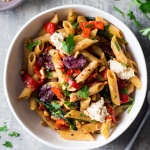
 221 views
221 viewsVegan red pepper pasta
lazycatkitchen.com
4.8
(5)
10 minutes
Your folders

 80 views
80 viewsVegan Marzipan (Egg-Free)
thecunningkitchen.com
Your folders

 83 views
83 viewsVegan Black Pepper Tofu Recipe
cinnamonandcoriander.com
5.0
(1)
30 minutes
Your folders
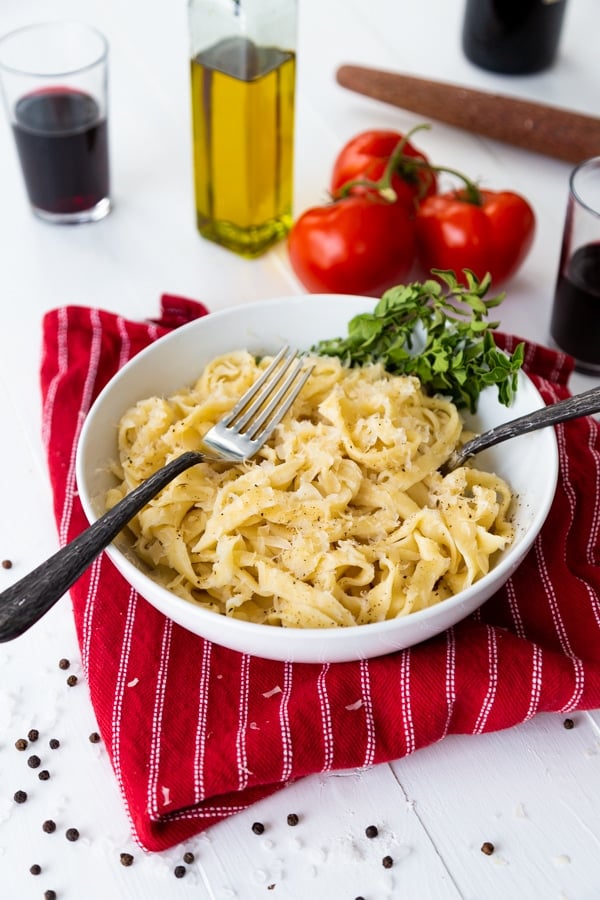
 429 views
429 viewsHOMEMADE VEGAN PASTA
veganosity.com
5.0
(2)
3 minutes
Your folders
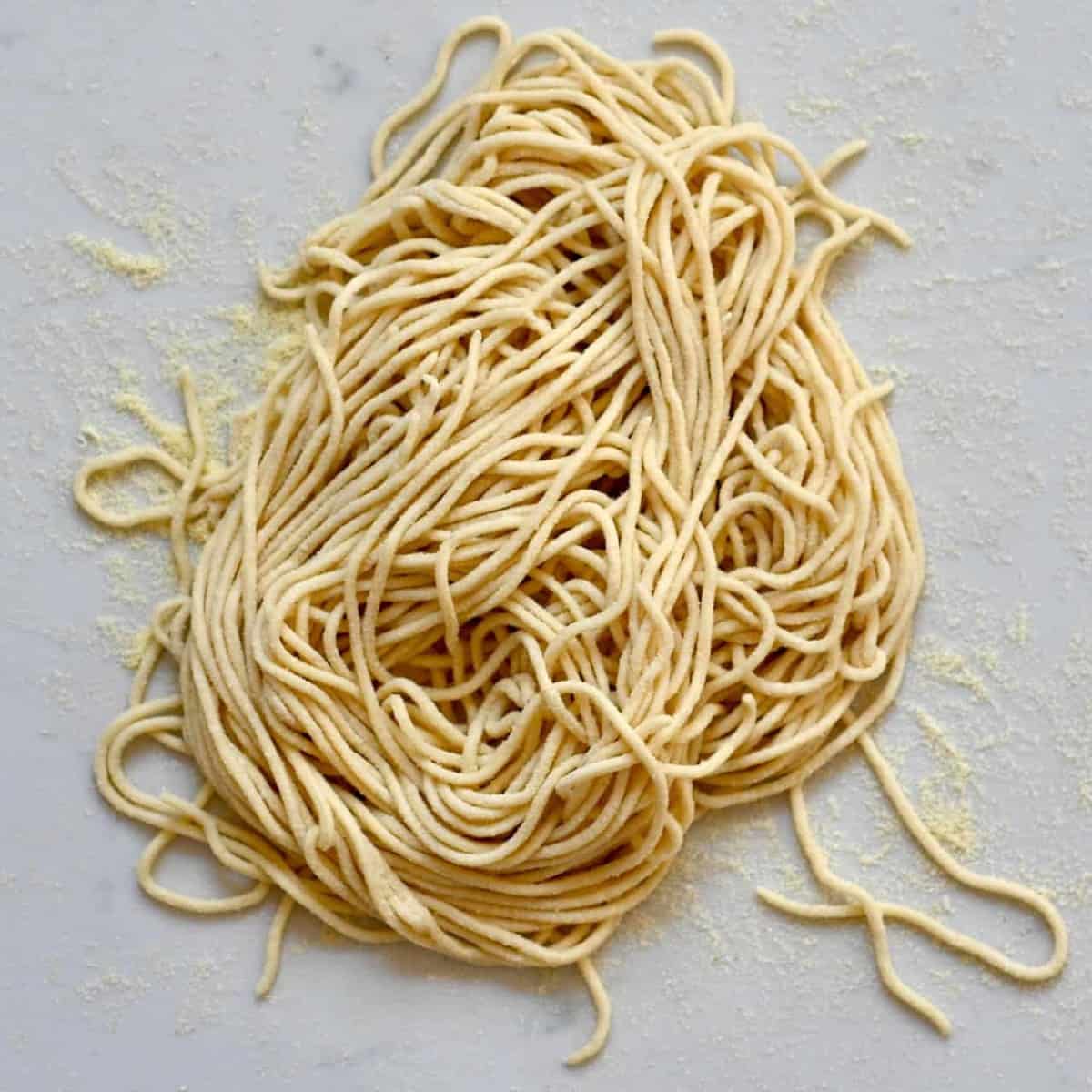
 167 views
167 viewsHomemade Vegan Pasta
alphafoodie.com
5.0
(23)
3 minutes
Your folders
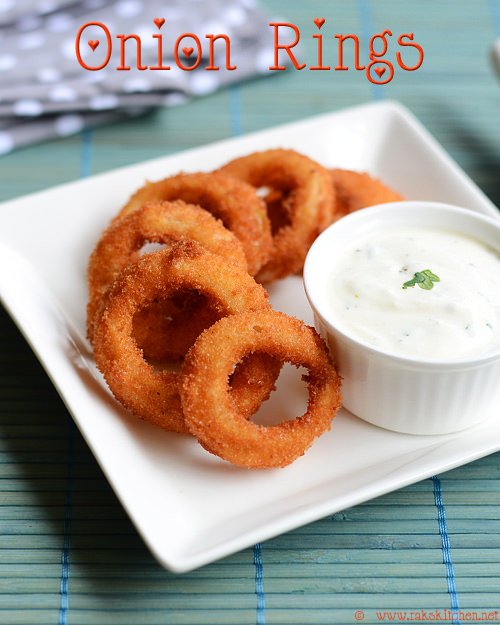
 223 views
223 viewsOnion rings - Homemade, egg free
rakskitchen.net
5.0
(1)
20 minutes
Your folders

 149 views
149 viewsVegan Roasted Red Pepper Pasta
myveganminimalist.com
4.9
(7)
20 minutes
Your folders

 226 views
226 viewsVegan Red Bell Pepper Pasta
veganheaven.org
4.9
(29)
5 minutes
Your folders

 200 views
200 viewsVegan Roasted Red Pepper Pasta
runningonrealfood.com
5.0
(3)
15 minutes
Your folders

 185 views
185 viewsCreamy Vegan Red Pepper Pasta
twocityvegans.com
15 minutes
Your folders

 657 views
657 viewsVegan Crispy Black Pepper Cauliflow...
rabbitandwolves.com
5.0
(26)
30 minutes
Your folders
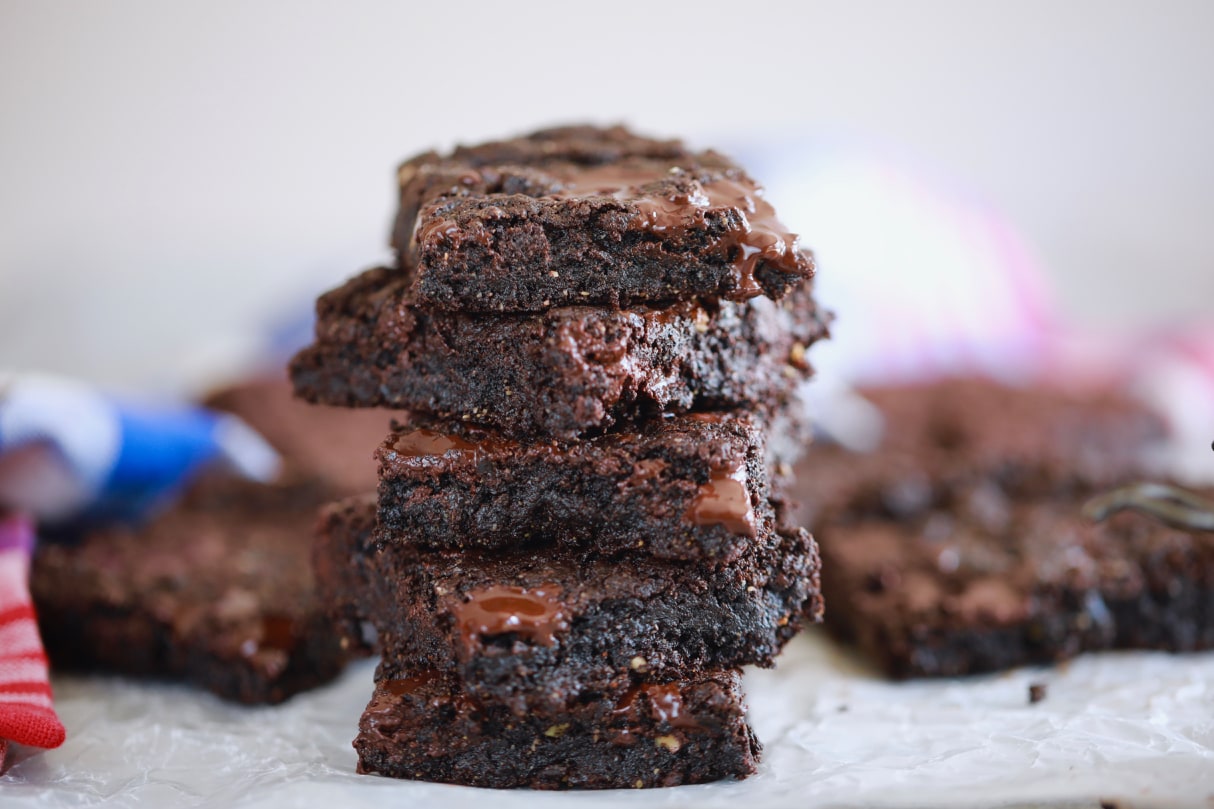
 443 views
443 viewsEgg Free Brownies Recipe (Vegan)
biggerbolderbaking.com
4.6
(58)
25 minutes
Your folders

 175 views
175 viewsGluten Free Black Pepper Chicken & ...
allergyawesomeness.com
4.8
(4)
25 minutes
Your folders

 163 views
163 viewsHomemade Vegan Caviar Black Pearls
veryveganval.com
10
Your folders
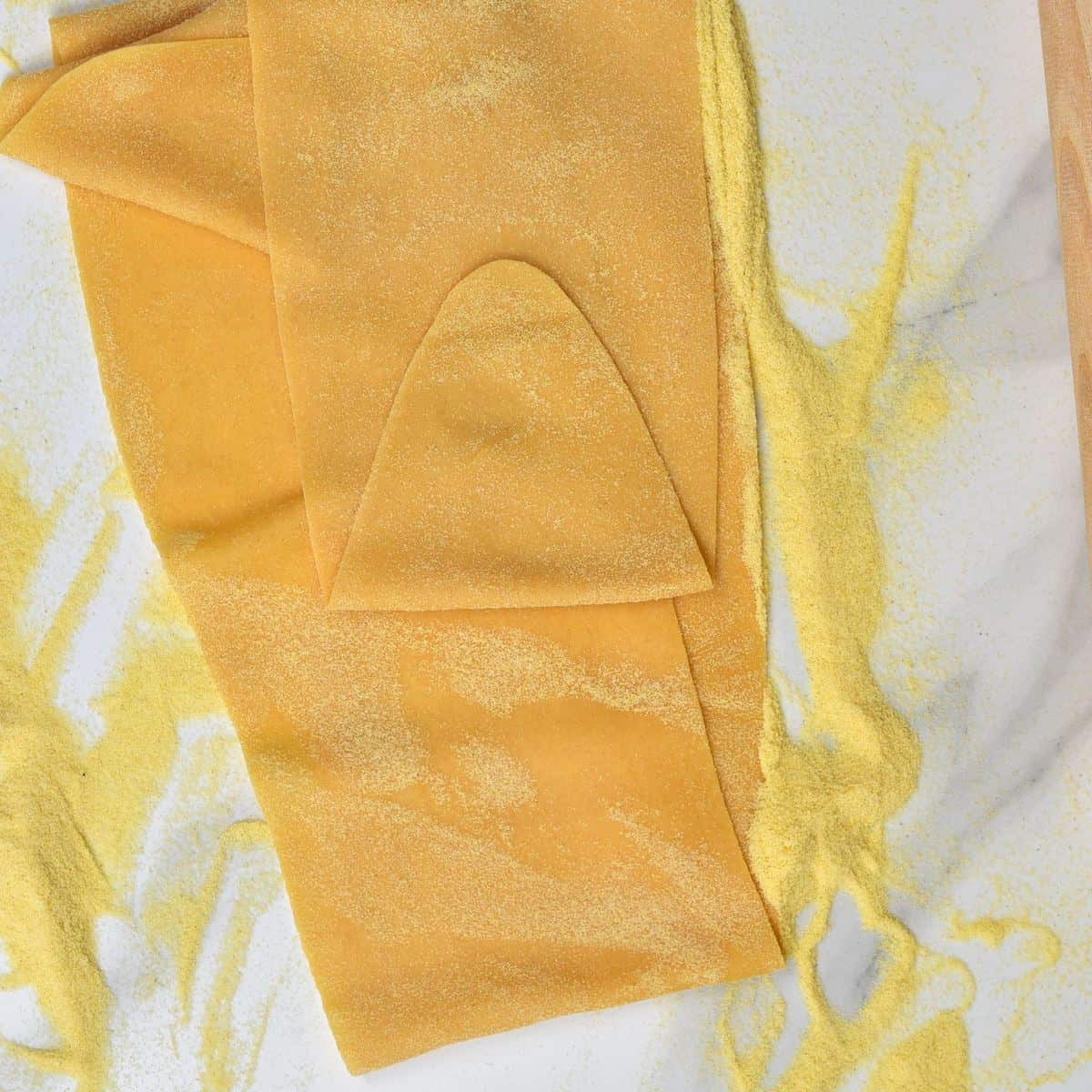
 223 views
223 viewsHow to Make Homemade Pasta (Egg Pas...
alphafoodie.com
5.0
(4)
3 minutes